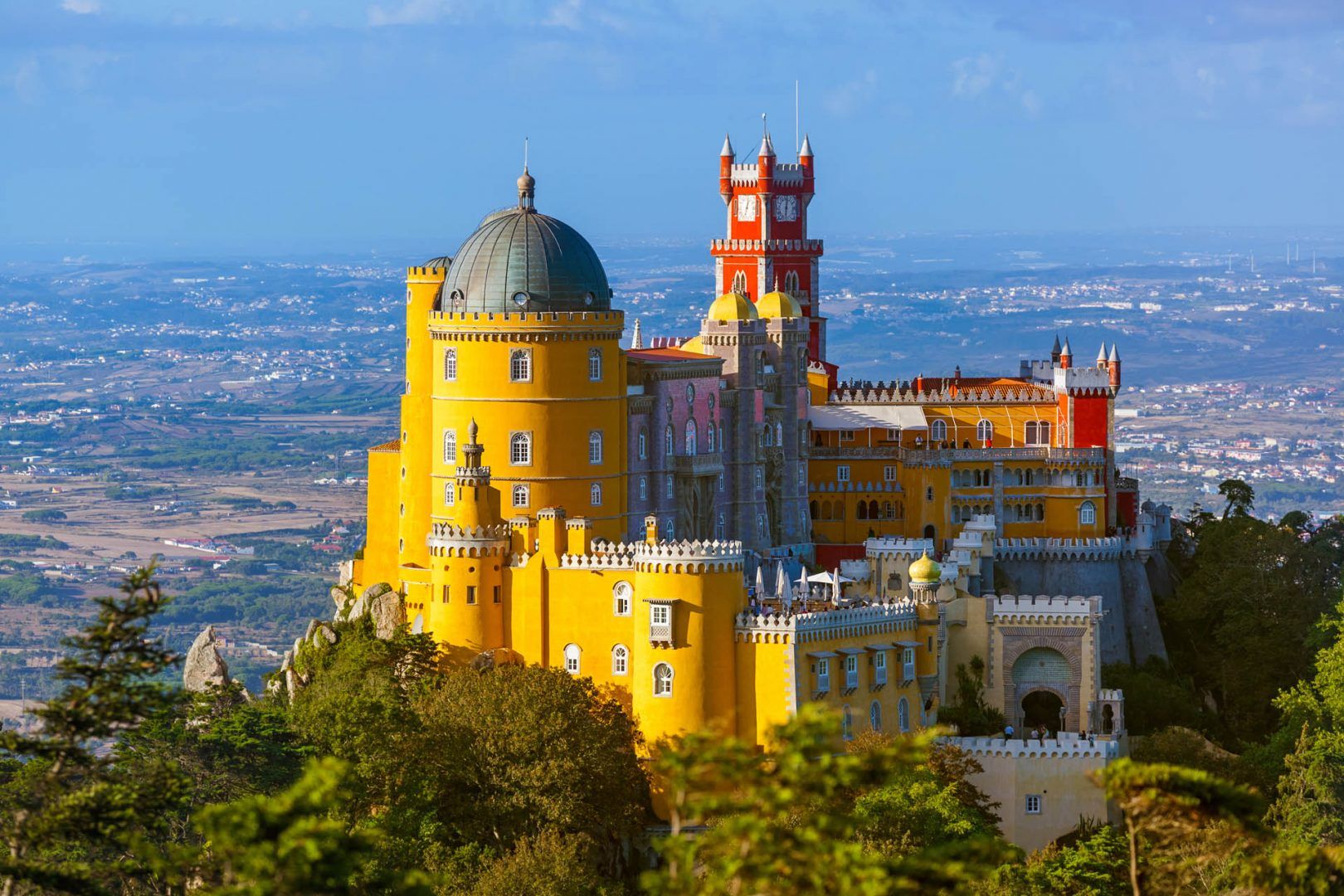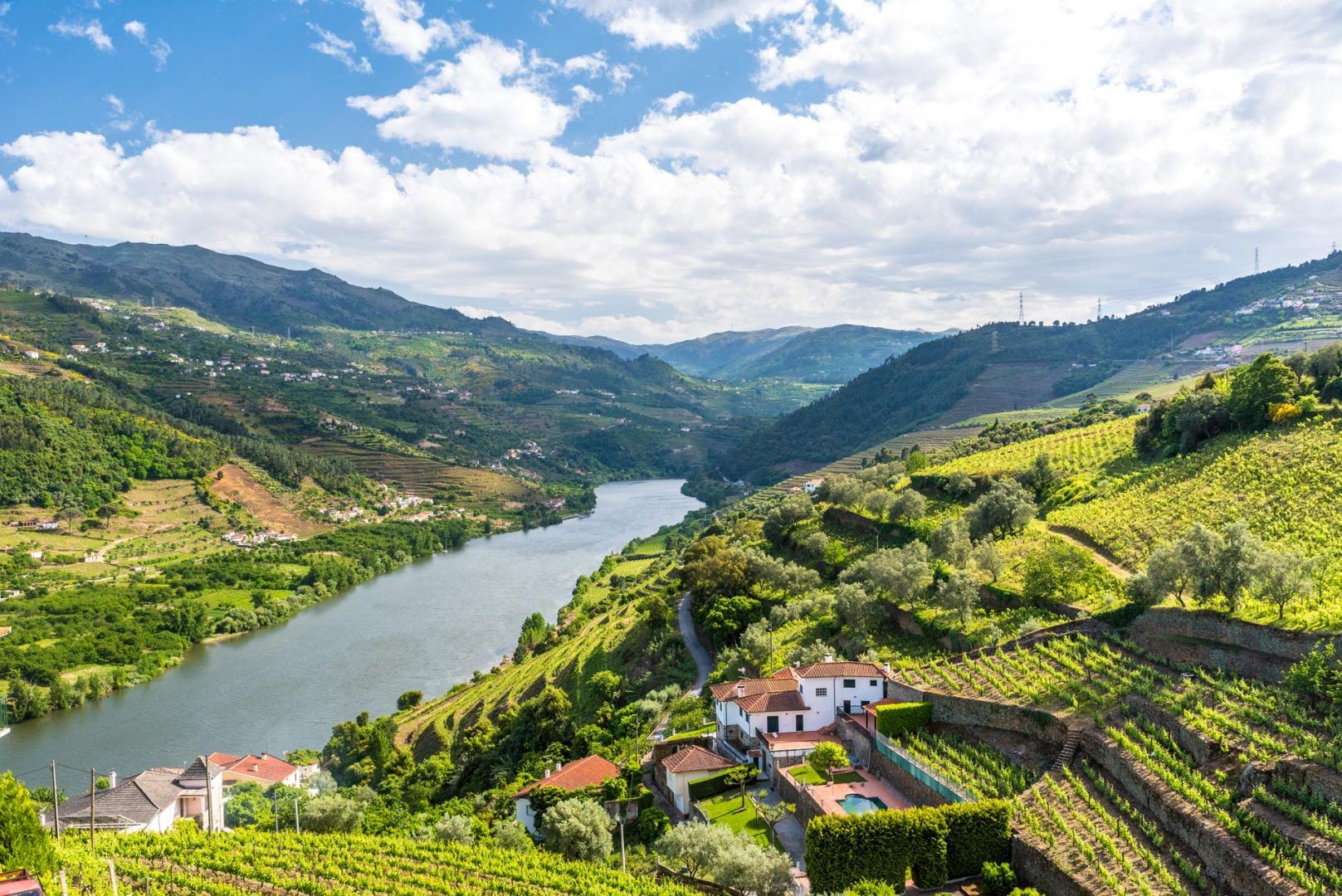Travel advice for Portugal
From travel safety to visa requirements, discover the best tips for visiting Portugal
Book your individual trip, stress-free with local travel experts
Put simply, the best time to go to Portugal depends on what you want from your trip, with spring and early fall of-cited as being the most favorable periods by repeat visitors. For more detail, read on for a bigger picture of the weather in Portugal, along with information on what to expect from visiting in different months of the year.
Eager to start planning your trip to Portugal? Contact our local experts who will tailor a unique itinerary to meet your needs.
If you want to cover a bit of everything on your trip – sightseeing, outdoor activities, lazy days on the beach with dips in the ocean — the best month to visit Portugal is September. It’s still hot, but far less intense than summer, and the sea will be at its warmest.
April to early May are also wonderful. Although sea temperatures are chilly, the landscapes are beautiful — lush, and alive with flowers, before the dry months of summer roll in.
| Month | Jan | Feb | Mar | Apr | May | Jun | Jul | Aug | Sep | Oct | Nov | Dec |
|---|---|---|---|---|---|---|---|---|---|---|---|---|
| Avg Temp (°F) | 50 | 52 | 55 | 57 | 61 | 66 | 70 | 72 | 68 | 63 | 55 | 52 |
| Rainfall (inches) | 4.33 | 3.94 | 3.15 | 2.76 | 1.97 | 0.8 | 0.4 | 0.4 | 1.57 | 3.94 | 4.33 | 4.72 |

Beach at Porto Covo © Shutterstock
Spring is a great time to visit Portugal. While it’s not quite the peak tourist season, you'll notice more visitors than in winter. But don't worry—it’s nothing like the crowded summer months. This means you can enjoy Portugal's cities in a warm and lively atmosphere without the stress of big crowds.
This means you can soak up the charm of Portugal's cities with a vibe that’s warm and lively, but all the better for being free from huge peak season crowds.

São Rafael beach, Albufeira, the Algarve, Portugal © Shutterstock
Portugal is delightful in spring. At this time of year, the hills pop with pretty flowers and almond blossom is in full bloom and with generally dry weather offering ideal hiking conditions.
For example, you could explore the Rota Vicentina — a network of coastal trails in the southwest — or the Parque Nacional da Peneda-Gerês, in the north.
Part of Portugal, but closer to North Africa, Madeira is an absolutely brilliant destination for sublime scenery around the year.
Here are some the best events of the season:
Rough Guides tip: Ready to explore Portugal? Start preparing by finding out how to get there.

Festival in Madeira, Portugal © Shutterstock
Spring weather in Portugal is all about a gradual warming trend and longer daylight hours. Temperatures generally range from 54°F to 68°F (12°C to 20°C), but they vary by region.
In Lisbon, for example, daytime highs go from 64°F (18°C) in March to 72°F (22°C) by May. Down in the Algarve, it’s often milder. The northern regions like Porto are cooler and a bit wetter.
Rain is more common early in the season, with March being the wettest month—especially in Porto, which sees around 5.04 inches (128mm) of rain, compared to Lisbon's 2.09 inches (53mm). By May, it’s much drier, with Porto getting about 3.50 inches (89mm) and Lisbon only 1.54 inches (39mm). Sunshine also increases as spring moves on, from around 6-7 hours a day in March to 9-10 hours by May.
Looking for more options for your vacation in April? Find the perfect vacation destination with our top suggestions.

Albufeira, Algarve, Portugal © Shutterstock
When you visit Portugal in the summer, you'll find miles of stunning coastline, with everything from the golden beaches of the Algarve to the rugged cliffs along the Atlantic.
Keep in mind that summer is Portugal’s busiest season, drawing in tourists from all over Europe and beyond. This brings a lively vibe with bustling cafes, packed restaurants, and vibrant nightlife, but it also means that beaches, resorts, and popular spots will be crowded.
Given how busy the most popular beaches and tourist attractions can get, we recommend peak-season summer as being an ideal time to try to get off the tourist trail. As stunning as Sintra can be, you'll find it absolutely packed with tourists and selfie-sticks during the summer.
You want to consider checking out hidden gems like the Berlengas Islands off Peniche, the historic town of Óbidos with its medieval charm, or the serene Douro Valley for some wine tasting with stunning views. If you’re into nature, the Peneda-Gerês National Park in northern Portugal offers hiking, waterfalls, and traditional villages away from the coastal crowds.
Not only is this a great way to implement sustainable travel in Portugal, but it’ll also give you opportunities to enjoy a more authentic, less frantic trip.
Summer is also packed with events you won’t want to miss:

Turquoise waters of Machico bay, Madeira © Balate Dorin/Shutterstock
In the summer, you can count on plenty of sunshine and heat all across Portugal. The Algarve and the coast up to Lisbon see very little rain, with temperatures generally around 86°F (30°C), sometimes hitting 95°F (35°C) or higher in inland areas. The Algarve enjoys about 12 hours of sunshine each day at the peak of summer, and with sea temperatures around 71.6°F (22°C), it's perfect for swimming and water sports.
Central Portugal can get extremely hot and dry, with places like Évora and Beja often soaring above 104°F (40°C). Up in the north, around Porto and the Costa Verde, temperatures are usually cooler, ranging from 77°F (25°C) to 86°F (30°C), and there’s a higher chance of summer showers, which can be a nice break from the heat.
Coastal areas benefit from refreshing sea breezes that make the heat more manageable, but inland cities like Lisbon can feel especially warm due to the urban heat island effect.
If you're still trying to make the best of this summer, see our guides to the best August vacation destinations, the best vacation destinations in July and the best vacation destinations for June.

Pena Palace, Sintra © Shutterstock
If you're planning to visit Portugal in the fall, you're in for a treat. With fewer tourists around, you’ll get to experience the country in a more authentic way. The weather is still pleasant, and you’ll find plenty of cultural events and delicious food to enjoy.
The Atlantic coast can see some storms, especially as you get into late fall, but inland areas like the Douro Valley are stunning with their fall foliage. It's the perfect time for scenic drives and wine harvests.

Albufeira, the Algarve, Portugal © Shutterstock
Surfing in Portugal is great year-round, but if you’re an experienced surfer looking for some exciting waves, September and October are prime months. The waves are consistently good, offering a great mix of challenge and fun.
Fall is also a fantastic time to dive into the local food scene. November marks the start of the olive season, and you can visit olive oil mills to see the pressing process and taste fresh olive oil.
Here are some standout events:

Porto, Portugal © Shutterstock
Fall brings mild and pleasant weather to most of the country. Average daytime temperatures range from 59°F to 73°F (15°C to 23°C), with coastal areas generally warmer than inland regions.
Lisbon, the capital, experiences average highs of 79°F ( 26°C) in September, dropping to 64°F (18°C) by November. The Algarve in the south remains particularly warm, with temperatures often reaching the mid-70s°F (mid-20s°C) even in October.
Rainfall increases as the season progresses, with November being the wettest month in many areas.
While sunny days are still common, especially in early fall, the amount of daylight decreases from about 12 hours in September to 10 hours by late November.
Looking for more options for a fall vacation? Also check out our list of the best destinations for an unforgettable vacation in October.

Vineyards on the banks of the Douro © Shutterstock
Winter is considered the low season, so you'll find that flights and accommodations are at their most affordable. Despite the cooler and wetter weather, this is a great time for a city break.
Even though it's a quieter time to visit, winter is one of the best seasons for enjoying lively festivals and a festive atmosphere. Portugal decks itself out with Christmas markets and vacation decorations that bring a special charm to towns and villages.

Cooking class in Algarve, Portugal © Dre Roelandt
While Portugal is often thought of as a summer destination, winter offers its own unique experiences. If you're up for some winter sports, head to Serra da Estrela, the highest mountain range on the mainland, where you'll find the country's only ski resort near Covilhã.
Here are some of the best events in Portugal in winter:
Looking for even more options for your winter getaway? Explore our guide to the best places for a February vacation.

Old town in Albufeira, Algarve, Portugal © Shutterstock
Winter in Portugal is generally mild compared to much of Europe. Coastal areas see average temperatures between 46°F to 61°F (8°C to 16°C ), while it's a bit cooler inland. Lisbon's temperatures typically range from 46°F to 59°F (8°C to 15°C), with January being the coldest month.
You'll experience more rainfall during the winter months, and daylight hours are shorter, around 9-10 hours a day. While snow is rare, it can be seen in mountainous areas like Serra da Estrela. The Atlantic coast, particularly in the north, can be windy and stormy. Despite the cooler weather, sunny days are still common, especially in the south, making Portugal a great winter escape. The Algarve, in particular, stays the mildest, with daytime highs often reaching 61-68°F (16-20°C).
From travel safety to visa requirements, discover the best tips for visiting Portugal
Discover Portugal's most captivating stories
written by
Michelle Bhatia
updated 15.05.2025